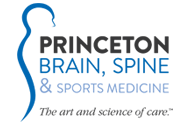Darren Daulton’s Glioblastoma – Brain Tumor

Glioblastoma is a tumor that starts out in the brain itself. We usually become aware of it when it grows large enough to press on parts of the brain that serve important functions, like speech or movement, or when it becomes so large that it increases the pressure inside the head, causing symptoms like headaches and nausea.
We don’t know why certain people end up with this type of tumor. It is not typically something than runs in families, and there are no clear environmental factors that lead to development of this type of tumor. There is always concern about cell phones, but scientific research as a whole has not demonstrated a significant association between cell phone use and health effects.
Glioblastomas are treated with a combination of surgery, radiation therapy and chemotherapy. Patients do best when the tumor can be removed surgically. Tumors that are located in essential areas of the brain, such as those controlling speech or movements, may not be able to be removed safely. Performing the surgery with the patient awake, as was done for Daulton, allows us to stimulate the surface and map out the exact location of a specific function in a patient’s brain. By doing this mapping, we can operate on tumors near essential areas with greater safety. Tumors that involve both sides of the brain can not generally be removed.
Even with a complete resection, glioblastomas will almost always recur. We know that there are microscopic tumor cells that invade the normal appearing areas of brain, so there is never really a complete resection. That is why radiation and chemotherapy are needed as well. Some of the chemotherapy that we have now has much less side effects, and works much better, than what we had in the past.
There is no question that people who are diagnosed with glioblastoma have been dealt a tough hand, but people are doing better with treatments currently available and new novel therapies are being developed. I have some patients who are doing well several years after diagnosis with Glioblastoma, which would have been unimaginable in the late nineties when I began my training.
We wish Darren Daulton the very best of luck in fighting the tumor.
